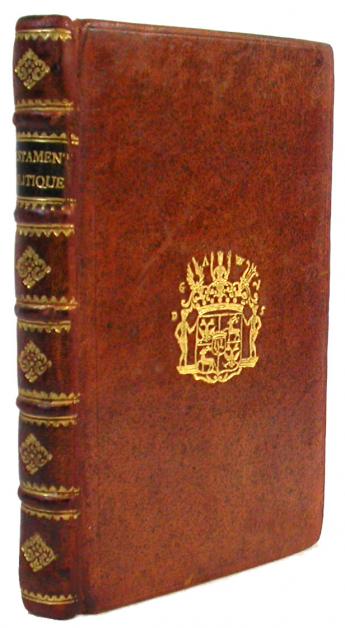Tip The Australian and New Zealand Association of Antiquarian Booksellers
Collecting Rare Books and First Editions - Bookbindings

By Louella Kerr
Background
`Bibliopegy’ is the art of binding books, and the collector, lover or scholar of bindings is a `bibliopegist’. Bookbinding dates from the ancient world Indian, Persian, Coptic, Chinese, Greek & Roman examples are known to exist, even if only in fragments. The rise of the universities, the increase of literacy outside the monasteries, and the invention of moveable type in Germany in the 1450s, all contributed to the demand for books. With this came the demand for decorative bookbindings in leather and metal, and the introduction of goldtooling (impressions in the leather) by Islamic craftsmen who settled in Venice in the 15th century.
Range
The bibliopegist has a huge range to choose from, limited only by financial means. The wealthy collector can concentrate on early bindings from Italy, Germany, France or England; on bindings from the library of a particular collector, such as Henri II of France, whose sumptuous decorative bindings interlace the initials, HD for Henri and Diane de Poitiers (his mistress), or HC for Henri and Catherine de’ Medici, his wife; or the great French patron Jean Grolier, whose collection of over 3000 books was dispersed in 1675. He or she could collect beautiful Stuart `embroidered’ bindings, or `Queens’ bindings from the Restoration period, or from a particular binder such as the great English binder, Roger Payne. The collector could seek out bindings using a particular pattern, such as the Italian `fanfare’ or `fan’ bindings, or particular techniques, including bindings with mosaic inlays or strapwork, embossing, or decorated in gems or metal.
Availability
More affordable (and available) are and 20th century bindings, and here the collector has a huge choice. He or she could collect armorial bindings (stamped with coats or arms or crests), or in ‘treecalf’, or bindings with ivory or metal clasps. He or she could look for special effects such as `foreedge paintings’, or `goffered edges’, or the beautiful vellum bindings of Douglas Cockerell at the Doves Bindery. A most attractive field for the collector is publishers’ bindings (books issued in the binding as opposed to handmade single bindings), in cloth, leather, paper, and a variety of plastics. Many of these are magnificent, such as the gorgeous bindings made for the books of Owen Jones and Jules Verne, or the beautiful and restrained bindings of Christina Rossetti’s Goblin Market by her brother Dante Gabriel, or the art nouveau bindings made for W. B. Yeats and Oscar Wilde. Two areas for the collector of Australian bindings are the hand bindings of the Sydney craftsman Wal Taylor (1920s), and handsome publishers’ bindings of Australiana, fiction and poetry.
Price
Attractive Victorian cloth bindings decorated with colours, or with pictorial inlays, can be bought from as little as $100. Fine 19th century sets of literature bound in half morocco can cost upwards from $1,000, whilst an example of a fine 18th century Venetian set in a `fan’ binding can be purchased for less than $5,000.
Footnote
Some informative and beautifully illustrated books include Ruari McLean’s Victorian Publishers’ Bookbindings in Cloth and Leather, W. J. Strachan’s The Artist and the Book in France; Maurice Craig’s Irish Bookbinding 16001800, or Miriam Foot’s Pictorial Bookbinding. A very good article (a work in progress available on the internet), is Carol Mills’ ‘Australian Bookbinders and Bookbinding of the Nineteenth Century’.
The article was first published in the “ANZAAB Aspects of Book Collecting” on www.anzaab.com, and is presented here, with our thanks, by permission of the ANZAAB.
>>> Louella Kerr Books
>>> Bookbinding and Collection Maintenance, by Newbold & Collins Bookbinders
>>> The Unavoidable: The Restoration of Books, by Geneviève von Hahn
